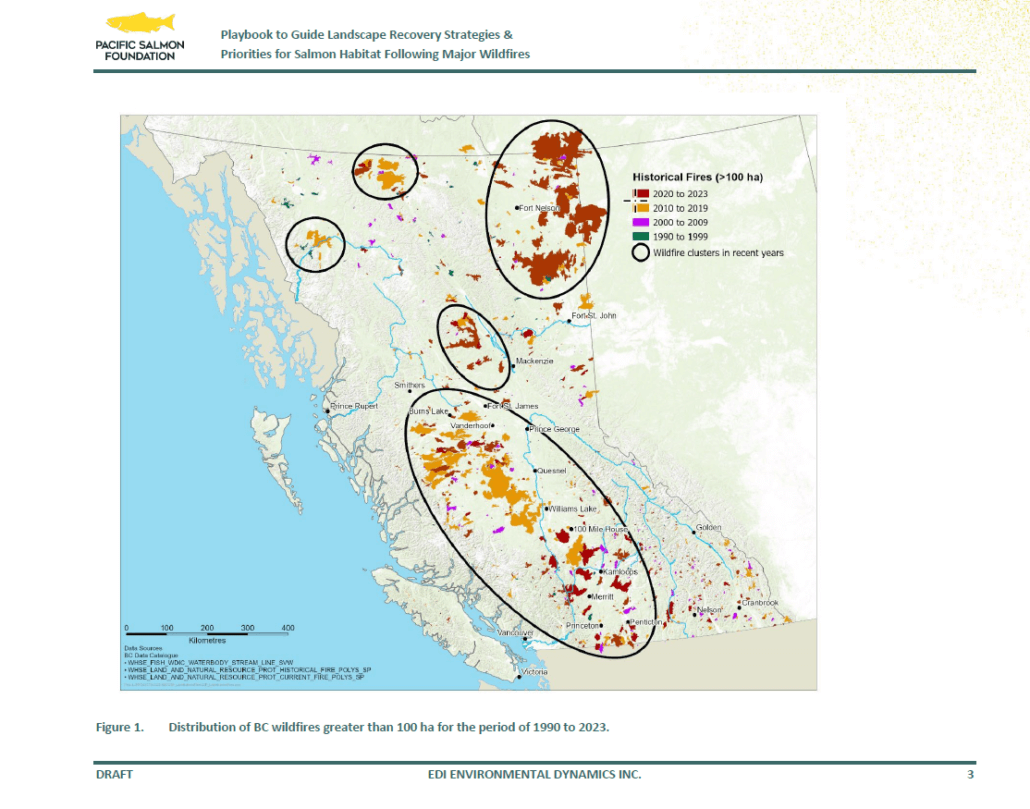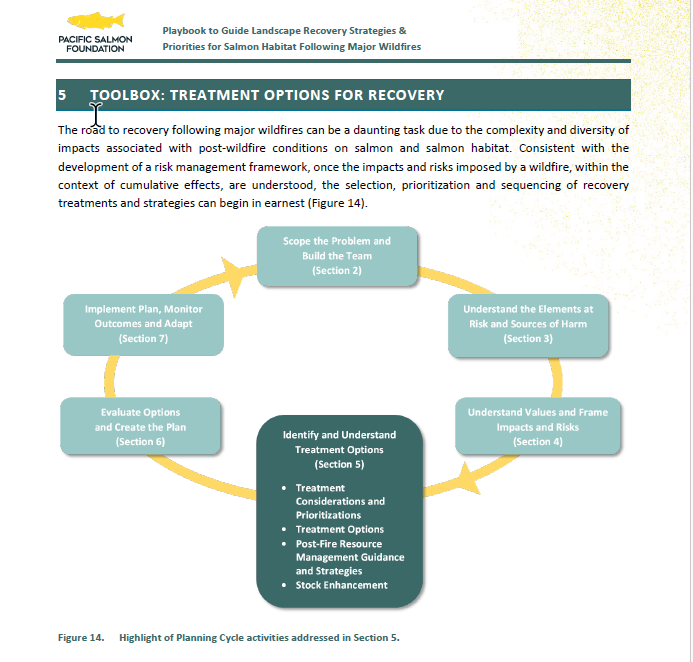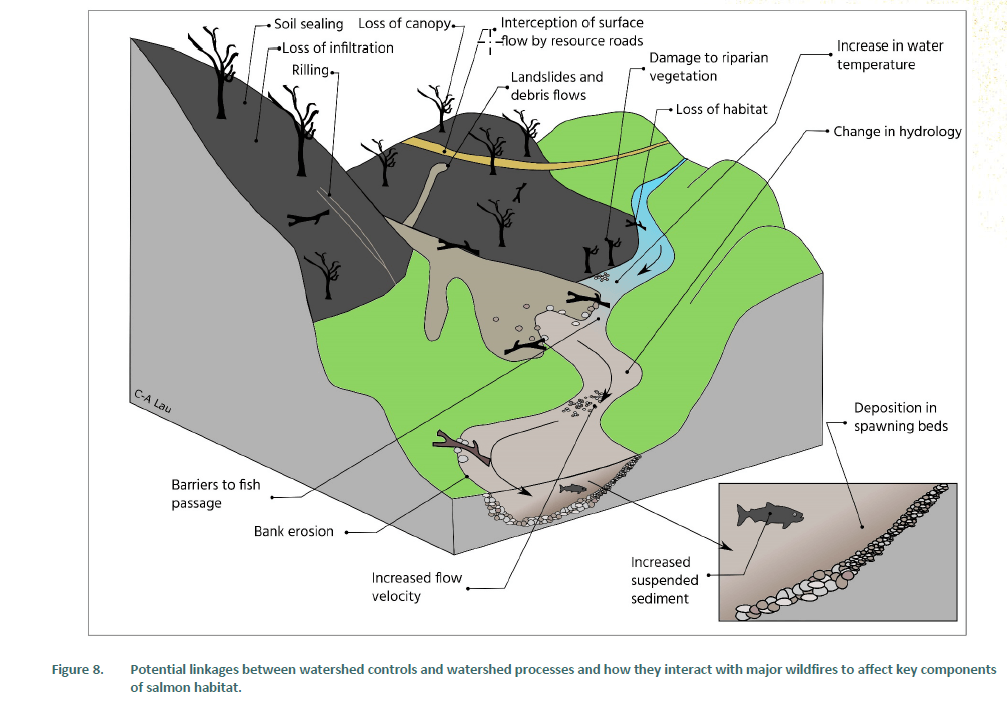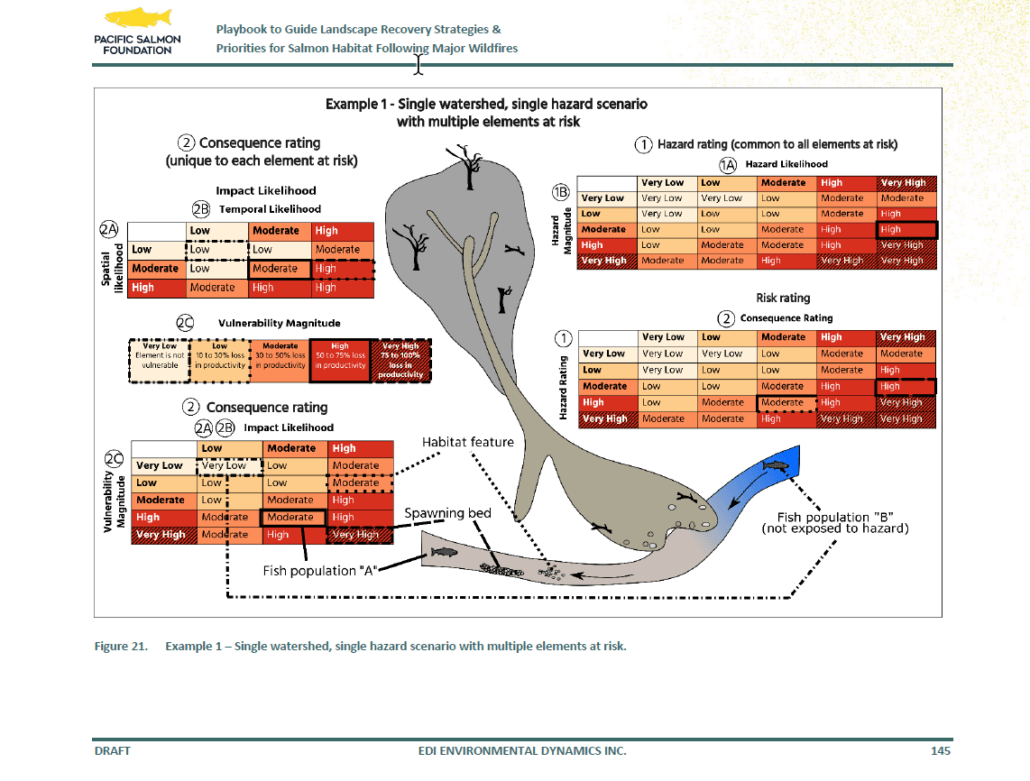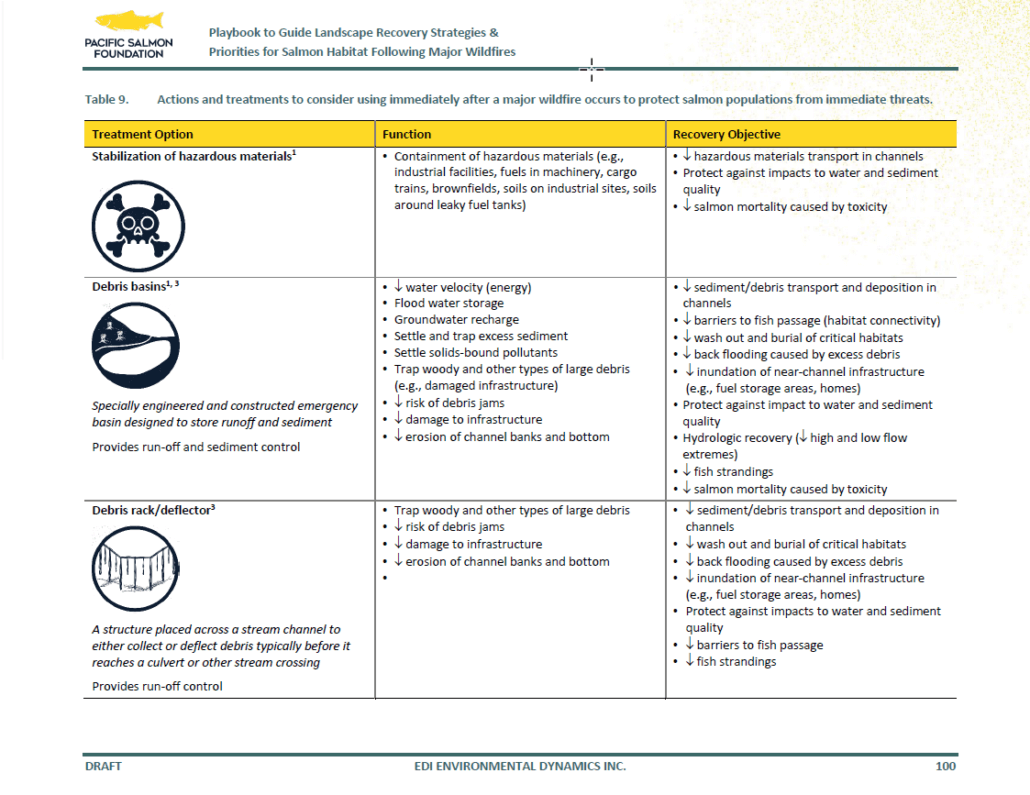A “Playbook” to Guide Landscape Recovery Strategies & Priorities for Salmon Habitat Following Major Wildfires
Background
In 2018, BC experienced its worst wildfire season on record. In that year 2,117 fires burned 1.35 million hectares of land surpassing the 2017 record of 1.2 million hectares. And it is anticipated that the 2021 fire season will become the third worst in the Province’s history. Increasing frequency, size and severity of wildfires is consistent with the Province’s climate change predictions and this will have serious implications for BC’s salmon populations – particularly those that spawn and rear in interior watersheds. Extensive loss of forest cover at landscape levels due to major wildfires will reduce the ability of forest canopy to moderate rainfall events, intercept snowfall and provide shading. At the same time the loss of riparian vegetation will reduce the resiliency of the stream banks to erosion. This can lead to watershed and site-level changes that negatively impact salmon and salmon habitats including: (i) hillslope erosion and gully failure leading to sediment delivery, changes in amount and timing of runoff/streamflow and associated in-stream impacts like the smothering of gravels etc; (ii) changes in channel morphology and erosion of channel banks and mass movement events. Such impacts have already been observed in the aftermath of major fires including the Elephant Hill Fire between Cache Creek and Clinton where summer rainfall events following the fire washed out gullies and deposited large volumes of sediment into the Bonaparte River.
Project Description
In BC, there is no specific strategy for, or guidance on, the management of salmon and salmon habitats following large fires. Risk-based guidance that identifies priority management actions in space and time would help to structure watershed recovery plans aimed at minimizing habitat impacts and accelerating watershed recovery. The Playbook will: a) identify assessment procedures designed to measure impacts & risks to salmon and salmon habitat; and b) compile strategies and treatments that would mitigate impacts and accelerate watershed recovery. This will include guidance on the development of geographically and temporally explicit actions/treatments at various scales. Treatment prioritization and timing decisions will take returns-on-investment and the trajectory of the watershed’s recovery into consideration. For example, some treatments, such as infrastructure and drainage modifications or sediment control may be best pursued in the period immediately after the fire while investments in bank stabilization and channel morphology might proceed after the attainment of forest cover (i.e. hydrologic recovery) targets. As such the Playbook will be a comprehensive tool for identifying and coordinating actions that are designed to mitigate impacts and accelerate recovery. In addition, the Playbook will recognize that watershed management actions will be set within a working forest and that it will be necessary to coordinate all management actions through ongoing engagement, planning, and implementation phases.
The Playbook will not develop new assessment, monitoring, reporting and data standards, and information systems. Nor will it develop new watershed and habitat restoration methodologies. Instead, the Playbook will assemble, organize and refer to known and relevant information sources, procedures, and best practices and then place them into an overarching and salmon-focused approach to watershed recovery planning and implementation. The Playbook will also outline the roles of all agencies, NGOs, and all levels of government, (including First Nations) and provide advice on the creation and function of multi-agency and G2G watershed recovery planning teams. The Playbook’s intended target audience is the forest industry, government agencies, First Nations, NGOs, and planning teams on watershed recovery priorities and actions and to guide the alignment and coordination of all land management activities in order to benefit salmon and salmon habitat including salmon habitat restoration and recovery planning. Playbook to Guide Landscape Recovery Strategies & Priorities for Salmon Habitat Following Major Wildfires has been funded by the joint federal/provincial British Columbia Salmon Restoration and Innovation Fund grant to the Pacific Salmon Foundation. It is currently under refinement and has involved guidance from federal and provincial agencies, First Nations and First Nations entities, NGOs and stakeholders.
For more information on the Playbook Project, please contact Jeff Morgan by email at jeffmorganfw@gmail.com or by cell phone at (250) 318-5666.


